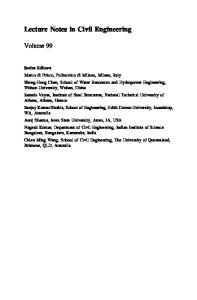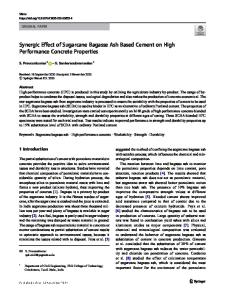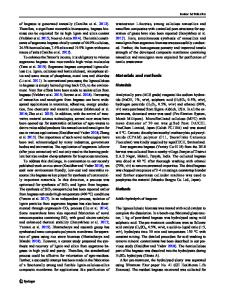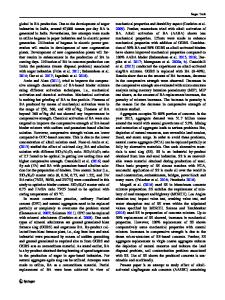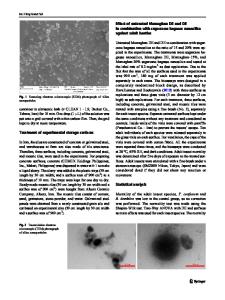Obtaining Biogenic Silica from Sugarcane Bagasse and Leaf Ash
- PDF / 4,225,321 Bytes
- 17 Pages / 595.276 x 790.866 pts Page_size
- 67 Downloads / 403 Views
ORIGINAL PAPER
Obtaining Biogenic Silica from Sugarcane Bagasse and Leaf Ash Luyza Bortolotto Teixeira1 · Elisângela Guzi de Moraes1 · Giovanna Paolinelli Shinhe1 · Gilberto Falk1 · Antonio Pedro Novaes de Oliveira1 Received: 10 March 2020 / Accepted: 3 September 2020 © Springer Nature B.V. 2020
Abstract Besides mineral sources, silica can be found in plants, particularly in the epidermis, since during their growth plants absorb the mono-silicic acid present in the soil, storing it as a natural form of protection, insect pest control and transpiration regulator. Among the plants that present high levels of silica in their ashes, we can highlight sugarcane, with Brazil being the largest producer of sugarcane derived (sugar and bioethanol) in the world, accounting 615 million tons per year. Thus, the increasing of the international demand encourages an increase of the availability of sugarcane wastes, pushing its use for the generation of electric power, as for other purposes enabling a sustainable development. In this work, high purity silica nanoparticles (up to 95%) with predominantly amorphous microstructure were obtained after thermal (500 to 700 °C) and chemical treatments (1 molar hydrochloric acid solution, 10% volume) of sugarcane bagasse and leaves ashes. The obtained results indicate the possibility of using this silica in ceramics, glasses, refractory materials and construction applications, as well as in the cosmetic and pharmaceutical industry, molecular sieves and mesoporous membranes. The silica obtained in this research also proved to be suitable for obtaining porous silicon (using magnesiothermic reduction), where the experimental procedure employed is described elsewhere. Graphic Abstract
Electronic supplementary material The online version of this article (https://doi.org/10.1007/s12649-020-01230-y) contains supplementary material, which is available to authorized users. Extended author information available on the last page of the article
13
Vol.:(0123456789)
Waste and Biomass Valorization
Keyword Biogenic silica · Silica nanoparticles · Sugarcane bagasse ash · Sugarcane leaves ash
Statement of Novelty Sugarcane bagasse and leaves are wastes from the sugar and ethanol industry, with very expressive worldwide production. Brazil is the largest producer of sugarcane in the world, accounting 615 million tons per year, and is also the largest producer of such waste. In addition to their use as biomass, such sugarcane residues have biogenic silica in significant quantities. Results showed that silica can be extracted from sugarcane bagasse and leaf ash using calcination and acid leaching processes, maintaining its characteristic morphology, high purity and surface area. The obtained silica could be used in many areas like ceramics (as traditional, glasses and refractory as advanced ceramics), construction, cosmetic and pharmaceutical industry, as well as silicon precursor by magnesiothermic reaction.
Introduction Silica (SiO2) is one of the most abundant chemical compounds in na
Data Loading...

